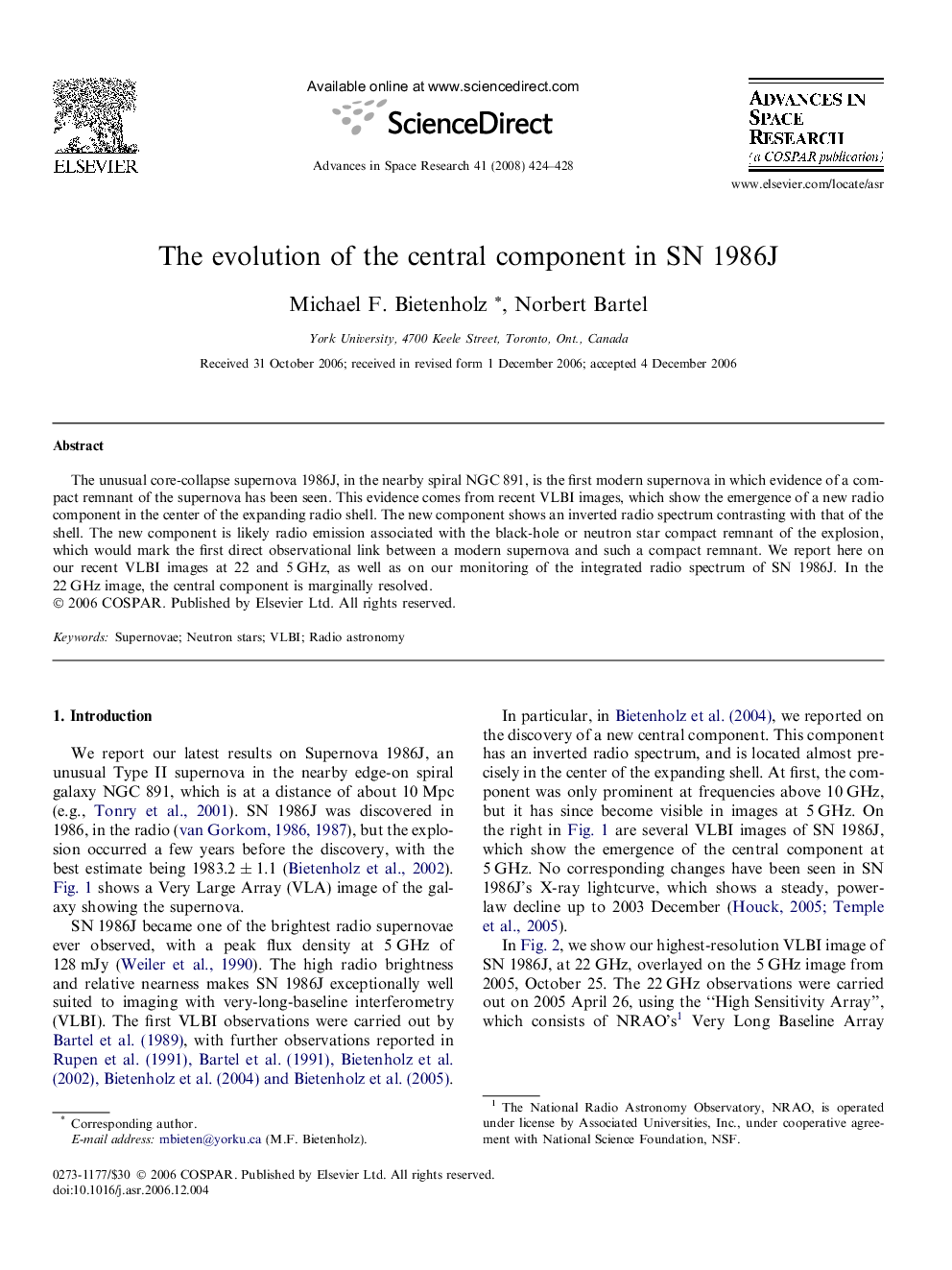| Article ID | Journal | Published Year | Pages | File Type |
|---|---|---|---|---|
| 1767444 | Advances in Space Research | 2008 | 5 Pages |
Abstract
The unusual core-collapse supernova 1986J, in the nearby spiral NGC 891, is the first modern supernova in which evidence of a compact remnant of the supernova has been seen. This evidence comes from recent VLBI images, which show the emergence of a new radio component in the center of the expanding radio shell. The new component shows an inverted radio spectrum contrasting with that of the shell. The new component is likely radio emission associated with the black-hole or neutron star compact remnant of the explosion, which would mark the first direct observational link between a modern supernova and such a compact remnant. We report here on our recent VLBI images at 22 and 5Â GHz, as well as on our monitoring of the integrated radio spectrum of SN 1986J. In the 22Â GHz image, the central component is marginally resolved.
Related Topics
Physical Sciences and Engineering
Earth and Planetary Sciences
Space and Planetary Science
Authors
Michael F. Bietenholz, Norbert Bartel,
